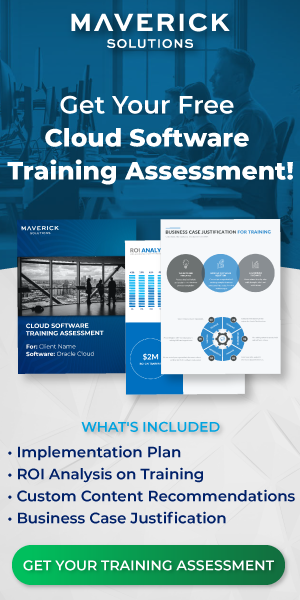Author: Danielle Gentry
You may have heard of purchase requisitions and purchase orders and assumed they were interchangeable terms referring to the same document. Although purchase requisitions and purchase orders are similar in nature, they are two separate documents that occur in different phases of the purchasing process.
Purchase requisitions and purchase orders are two key components of Oracle Procurement Cloud. It is crucial for you to understand purchase requisitions and purchase orders before you begin the purchasing process. Let’s explore the specifics of purchase requisitions and purchase orders one at a time.
What is a purchase requisition?
A purchase requisition, or purchase request, is not the actual purchase of an item, but rather, an internal document requesting the purchase of an item or service. A purchase requisition is created and submitted for approval by a requisition requester and must be approved by a requisition approver. Common details listed on a purchase requisition include the following:- Requested items or services
- Prices
- Quantities
How is a requisition created?
Requesters can use Oracle Cloud Procurement to create requisitions manually or from a Catalog. Utilizing the available Catalogs to search for and add items to your shopping cart will automatically create a requisition. Once you have added all of your items to the cart, you can submit the requisition. You can also add items to your cart that are not a part of a Catalog, these are referred to as noncatalog items. You will need to manually input the details for any noncatalog items you are requesting. Once created and submitted for approval, a requisition is routed to one or more approvers. If the requisition is approved, a purchase order can be created by sourcing the information from the requisition.How are requisitions managed?
Requesters can use the Purchase Requisitions work area to perform the following actions:- Search for items in a Catalog
- Create shopping lists
- Add items to a shopping cart
- View requisitions
- Create and manage requisitions
- Submit requisitions for approval
- Withdraw requisitions
- Delete requisitions
- Cancel requisitions
How are requisitions approved?
Once a requisition is submitted, the application sends it to a requisition approver. Oracle Cloud offers an automated approval management workflow that routes tasks from one user or group to another. As a requisition approver, you will need to ensure that you are reviewing key details of the requisition before you choose to approve or reject it. The following steps outline how an approver can approve or reject a requisition:- In the application, the approver receives an Action Required notification.
- The approver opens the attached requisition.
- The approver reviews the requisition lines and details, along with any comments from previous approvers.
- In the notification, the approver selects the Approve or Reject button.
What is a Purchase Order?
Once a purchase requisition is approved, a purchase order (PO) can be created. A purchase order is a formal document from buyer to supplier, indicating the details of the actual purchase of items or services. While a purchase requisition is typically only used by those inside your company, a purchase order is sent to suppliers outside of your company. Common details listed on a purchase order include the following:- Description of items or services being purchased
- Quantities and agreed-upon prices of items or services
- Terms and conditions
- Supplier information
- Delivery information
How is a purchase order created?
The following list outlines various methods that can be used to create a purchase order:- Processing an approved requisition into a purchase order using the Process Requisitions task
- Configuring approved requisitions to be automatically converted into purchase orders
- Using the Create Order task to manually create a purchase order
- Duplicating an existing purchase order
- Importing a purchase order from a third-party application into Oracle Cloud Purchasing
Processing a requisition into a purchase order
From the Process Requisition page, you can gather requisition criteria to create a purchase order. This page can be found in both the Purchase Agreements and Purchase Orders work areas. You can select the requisition lines that meet your needs and use them to build a purchase order by adding them to the document builder. Requisitions can also be processed into negotiations if you are using Oracle Fusion Sourcing.Automatic purchase order creation
It is possible that a purchase order can be generated from an approved requisition without any action from the procurement agent. Only requisitions that are created for catalog items or imported through the requisitions open interface are eligible for automatic conversion to purchase orders.How are purchase orders managed?
The Purchase Order work area can be used by buyers to perform the following tasks:- View Purchase Orders that require attention, including those that were rejected, failed to submit, or are on hold.
- Review the total number of current and incomplete purchase orders and change orders.
- View any recent actions from other users that have been performed on purchase orders.
- View open order schedules and unprocessed requisitions.
- Review the number of purchase orders that are pending supplier acknowledgment.
- Perform actions related to purchase orders and their associated requisitions.
- Create purchase orders.
- Perform tasks related to the suppliers that are listed on the purchase orders.
- Create a change order if modifications are needed for the purchase order.
- Delete, cancel, or withdraw the purchase order.
- Close the purchase order.
- Indicate that a supplier has acknowledged a purchase order.
- Review the purchase order’s history.
How is a Purchase Order approved?
Once a purchase order is submitted for approval, it is routed to one or more listed approvers. Once an approver receives an approval request, they will review the details of the request, and choose one of the following options:- Request additional information regarding the purchase order.
- Reassign the purchase order to be reviewed by additional approvers.
- Approve the purchase order.
- Reject the purchase order.
Still have questions on purchase requisitions and purchase orders?
Both purchase requisitions and purchase orders are used in companies of all sizes. Utilizing these key documents will ensure that your company stays organized, prepared, and informed throughout the purchasing process. Maverick Solutions offers more training content on Oracle Procurement Cloud and other enterprise software through a training platform called ENGAGE. ENGAGE is Maverick Solutions’ comprehensive, subscription-based training offering for enterprise software. ENGAGE is both a learning platform (ENGAGE Learn) and a GPS (ENGAGE Live) for your Oracle Cloud software. ENGAGE Learn contains thousands of training resources and interactive training simulations that walk users step-by-step through complex business processes. ENGAGE Live is accessible in the live Oracle application and guides users in real time with any issues in the system. Offering fully customizable Training as a Service (TaaS), Maverick Solutions can provide your organization:- Training available anytime, anywhere
- Content that’s always current with software updates
- Interactive simulations
- Learning consultation to determine your organization’s training needs




